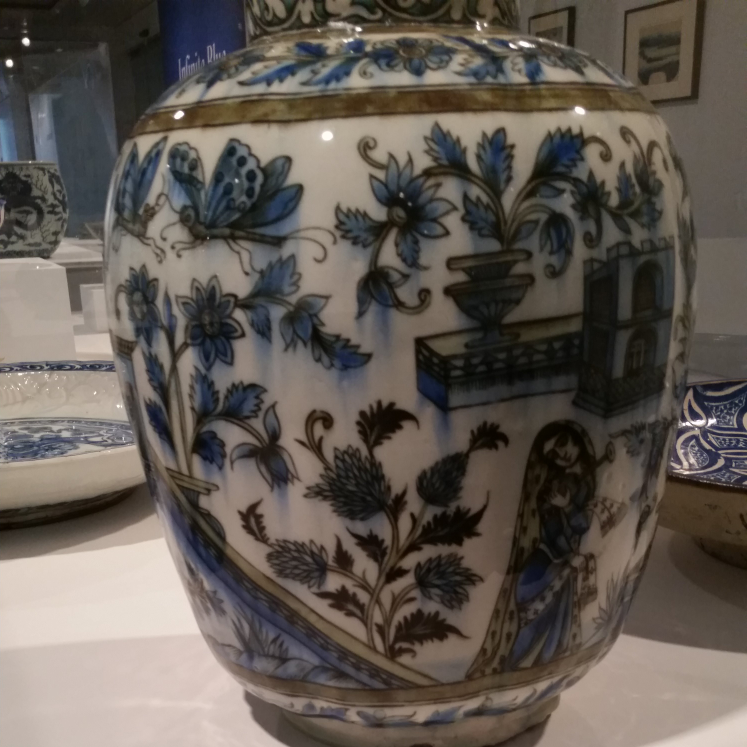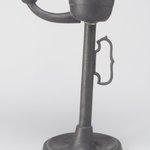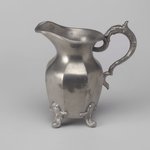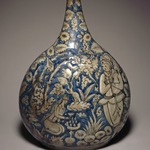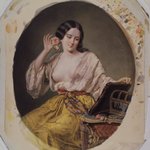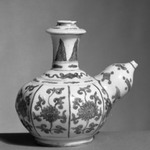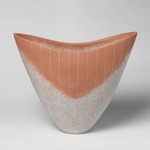

Vase with Architectural, Figural, and Floral Designs, 19th century. Ceramic; fritware, painted in black, cobalt blue, and green under a transparent glaze, 13 1/4 x 11 in. (33.6 x 28 cm). Brooklyn Museum, Designated Purchase Fund, 73.144.2. Creative Commons-BY (Photo: Brooklyn Museum, 73.144.2_side1_PS2.jpg)

Vase with Architectural, Figural, and Floral Designs, 19th century. Ceramic; fritware, painted in black, cobalt blue, and green under a transparent glaze, 13 1/4 x 11 in. (33.6 x 28 cm). Brooklyn Museum, Designated Purchase Fund, 73.144.2. Creative Commons-BY (Photo: Brooklyn Museum, 73.144.2_side3_PS2.jpg)

Vase with Architectural, Figural, and Floral Designs, 19th century. Ceramic; fritware, painted in black, cobalt blue, and green under a transparent glaze, 13 1/4 x 11 in. (33.6 x 28 cm). Brooklyn Museum, Designated Purchase Fund, 73.144.2. Creative Commons-BY (Photo: Brooklyn Museum, 73.144.2_side4_PS2.jpg)

Vase with Architectural, Figural, and Floral Designs, 19th century. Ceramic; fritware, painted in black, cobalt blue, and green under a transparent glaze, 13 1/4 x 11 in. (33.6 x 28 cm). Brooklyn Museum, Designated Purchase Fund, 73.144.2. Creative Commons-BY (Photo: Brooklyn Museum, 73.144.2_side2_PS2.jpg)
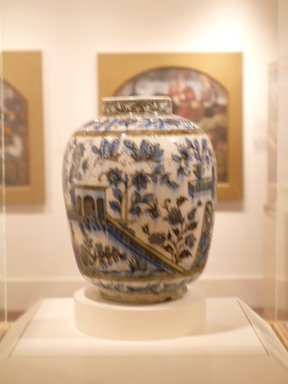
Vase with Architectural, Figural, and Floral Designs, 19th century. Ceramic; fritware, painted in black, cobalt blue, and green under a transparent glaze, 13 1/4 x 11 in. (33.6 x 28 cm). Brooklyn Museum, Designated Purchase Fund, 73.144.2. Creative Commons-BY (Photo: Brooklyn Museum, CUR.73.144.2_view1.jpg)

Vase with Architectural, Figural, and Floral Designs, 19th century. Ceramic; fritware, painted in black, cobalt blue, and green under a transparent glaze, 13 1/4 x 11 in. (33.6 x 28 cm). Brooklyn Museum, Designated Purchase Fund, 73.144.2. Creative Commons-BY (Photo: Brooklyn Museum, CUR.73.144.2_view2.jpg)

Vase with Architectural, Figural, and Floral Designs, 19th century. Ceramic; fritware, painted in black, cobalt blue, and green under a transparent glaze, 13 1/4 x 11 in. (33.6 x 28 cm). Brooklyn Museum, Designated Purchase Fund, 73.144.2. Creative Commons-BY (Photo: Brooklyn Museum, CUR.73.144.2_view3.jpg)

Vase with Architectural, Figural, and Floral Designs, 19th century. Ceramic; fritware, painted in black, cobalt blue, and green under a transparent glaze, 13 1/4 x 11 in. (33.6 x 28 cm). Brooklyn Museum, Designated Purchase Fund, 73.144.2. Creative Commons-BY (Photo: Brooklyn Museum, CUR.73.144.2_view4.jpg)
Vase with Architectural, Figural, and Floral Designs
Arts of the Islamic World




